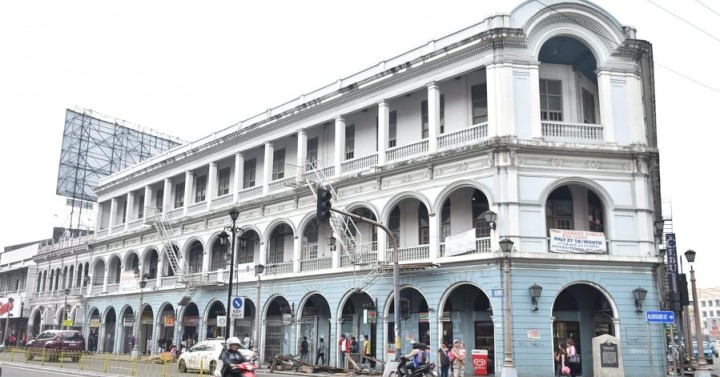
Here is the second part of my post sharing the heritage and tourist attractions here in Iloilo City, Philippines. This time, we will be presenting some sites mainly located in the old district of the city and are mainly relevant to its history. It is great to share knowledge about our Ilonggo roots right? We start with:
JM Basa Street/Calle Real – Originally called “Calle Real”, and is presently known as the Cultural Heritage Zone because of the existing abundance of heritage buildings. Located in the old downtown district of Iloilo City, the street is often referred to as the “Escolta of Iloilo”. It has been famously known as one of the prime business destinations during the Spanish Era.
Plaza Libertad – formerly “PLAZA ALFONSO XII”, where the Philippine flag was raised in triumph after the Spaniards surrendered Iloilo, their last capital in the Philippines on December 25, 1898.
Nicholas Loney Monument – Erected in honor of Nicholas Loney, Father of Sugar Industry”’ he could easily be identified as the “architect of Iloilo’s progress being responsible for uplifting its economy from a less promising textile trade to a booming sugar business. Muelle-Loney is a street in the Iloilo waterfront is one reminder of Loney’s progressive enterprise.
Fort San Pedro – Fort San Pedro or formerly “real Fuerza de Iloilo” was completed in 1616 all made of stone with good bulwarks and arsenal that were surrounded by big cannons. Quadrilateral in shape and measured 60 by 60 meters. The walls were composed of cutouts of Guimaras rocks and coral stones from along the Panay Coast. Fort San Pedro was built to protect the city from invaders that threatened Iloilo such as Dutch and Moro pirates. The disrepair of the fort started in the early 20th century and was totally destroyed during World War II.
Old Provincial Capitol – The capitol building in Iloilo referred to as “Casa Real” or the Royal House during the Spanish times was built in 1840. The “Casa Real” was the residence of the alcalde-mayor or governor, the highest Spanish official in Iloilo. The architectural character of the Capitol is that of Electricism. The front colonnade composed of pillars is in the style of the Greek-Roman Doric order, visually enhanced by entasis, a technique curving the column shafts.

Arroyo Fountain – Kilometer zero; constructed in 1927 and named after Senator Jose Maria Arroyo, grandfather of the Philippines, Miguel “Mike” Arroyo.
Iloilo Freedom Grandstand – Constructed in 1953 immediately after Cong. Rodolfo Ganzon introduced the Iloilo Freedom Bill during the same year. This historic place in Iloilo City has witnessed many events and gathering social, cultural, and political was renovated in 2003 under the administration of Mayor Jerry P. Treñas. The renovation of the Freedom Grandstand was funded by CDF of Sen. John Henry R. Osmena through the efforts of the Mayor and Congressman. A large outdoor stage is located along Iznart St., in Downtown Iloilo. Freedom Grandstand is the main judging area during the annual Dinagyang Festival.
